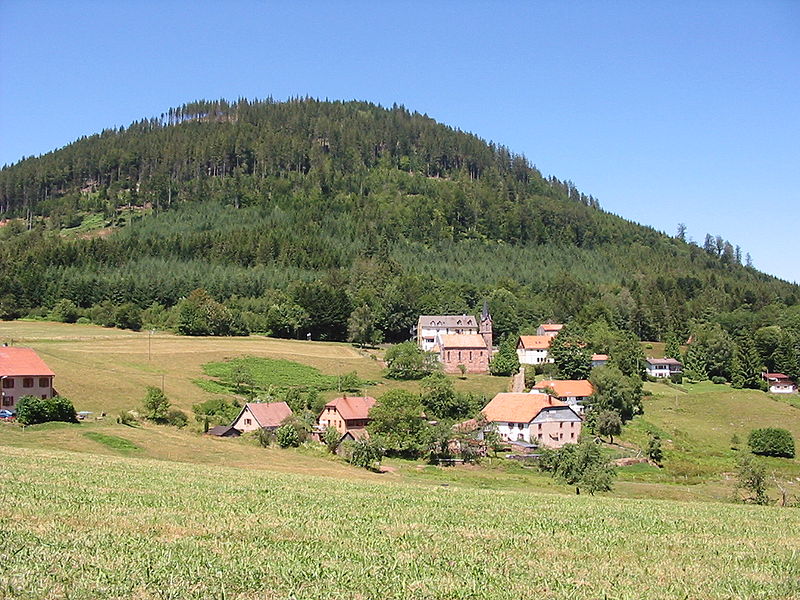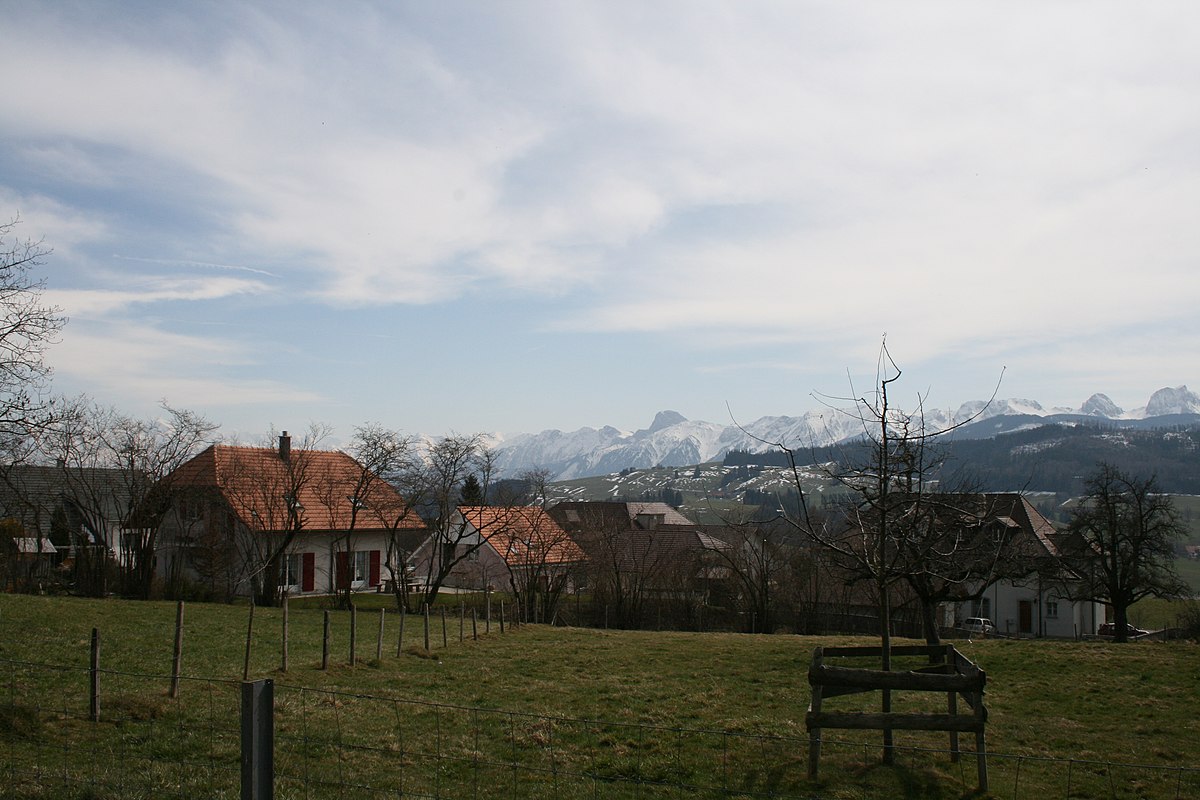|
Rheinheimergenealogypages
including Reinhard, Rheinheimer, Shively, and Stout |
Reinhard and Roth Families in Alsace
We are going to discuss what we know about the ancestors of John Reinhardt,
who was born in France in 1843 and died in Illinois in 1927. This is not a work of scholarship; for historical scholarship, we will direct you
to Wikipedia or Joseph Peter Staker's research, which aligns closely--he has a
section
on Kathryn Egli's family, for instance, into which John married--with the
genealogical research we have done. For the details of what's in the records and where the weak points may be, see our
Reinhard/Roth in Alsace Research Status. The map to the left shows an overview, and
clicking on it will take you to an interactive map with more detail.
George and/or John Rheinhardt/Reinhardt/Reinhard
The first vexing question about this family is how George Rheinhard born in France became John Reinhardt in Illinois. Gambling debts? No; nothing so exciting here, or at least not that we've found. A record of emigration/immigration would be useful, but so far we haven't found one. The spelling of the last name is explained simply enough--French and American record keepers writing a German name spell it all sorts of ways--R'hinhard or Reimehote are some of the most exotic spellings. Most of George's--we'll call him George, since that's the name on his birth record--ancestors are Swiss immigrants who are listed in the records as Jean or Jacques but sign their names Johann or Jacob. George's name is just George, but he's named after his paternal uncle Jean (or Johann) George Rheinhardt, so maybe he was meant to be John George all along. What else do we know about his early life? He is the youngest of three children born to Joseph Rheinhardt and Madelaine Roth, the other two being, coincidentally, Joseph and Madelaine, born in 1840 and 1841, respectively, and all three in Sainte-Marie-aux-Mines, France. All three children are born "natural, recognized", the other two choices in the records being "natural, unrecognized" and blank, meaning legitimate. Joseph and Madelaine--who was probably called something like Magdalena by her friends--never married but had three children together. Joseph died in 1848, when George was five years old, but many years later, in October 1886, Madelaine Roth's death record says she is Joseph's widow. Other things Magdalena's death record says are that she is Mennonite--we'll come back to that--and that she died in the community hospital in Sainte-Marie-aux-Mines. We don't know her circumstances when she died. She had family around, but not her immediate family. Joseph, as mentioned, had died nearly forty years earlier, her two sons emigrated to the United States in the 1860's, and her daughter Madelaine had died a few years earlier, in 1879. Her only grandchild born in France to reach adulthood was Madelaine's (natural, unrecognized) daughter Adele, and Adele was married in February of the next year in Illinois, United States. That location is no coincidence; Adele married Benjamin Egli, the younger brother of her uncle's wife Kathryn Egli. Her two uncles weren't in Tazewell County, Illinois, randomly, either. As Staker documents, there were many local Mennonite families who relocated from the vicinity of Sainte-Marie-aux-Mines to Illinois before them. In general, there was a lot of turmoil in France (and other European places) in the late eighteenth century and through the nineteenth. In addition to the well-known French Revolution and Napoleonic Wars, there are internal revolutions in 1830 and 1848, the Crimean War, French invasions or attempted invasions of Spain, Italy, China, and Mexico, and, in 1870, the Franco-Prussian War, after which things settle down a little and all the Alsatian records are more orderly and written in German.
How do these conflicts affect George/John Reinhardt and his brother Joseph, specifically, and their decision to emigrate to America? We don't really know. We know their parents weren't married, but seem to have been connected somehow. In any case, their father dies before either of them are ten years old. Their mother is listed as "without profession", while their father is a harvester or farmhand, which is different than a farmer, essentially in degree of ownership. Joseph Rheinhard is said to live on one estate at the birth of his first two children in 1840 and 1841, and on another estate at the birth of George in 1843. Magdalena lives "in the same town", maybe with him, maybe not. By the time the brothers are about twenty years old, the 1848 revolution has come and gone, as has the Crimean War and second Opium War, and the French intervention in Mexico is starting while the Americans are distracted by their Civil War. Maybe all these conflicts are good business for farmers and farmhands, or maybe it's not surprising that one of the first things George/John does upon arrival in America is enlist in the US Cavalry (Company A, 11th Cavalry)--family oral history says he was a soldier in France, as well.
Reinhard and Roth Grandparents
Maria Magdalena Roth was born 16 February 1804 in La-Croix-aux-Mines, the fourth child of seven of Nicolas Roth and Anne Müller, who were married in 1797. That is fairly straightforward, but there are details. Nicolas was a weaver, a common profession at that place and time, and he was married four times, having at least one child with each wife. Anne was not previously married, as far as we know, but she did have a son who was three years old at the time of her marriage to Nicolas; the boy died a year later. Also, previously to her marriage to Nicolas, she was employed as his housekeeper. They were about 36 (Nicolas) and 33 (Anne) when they married. Anne died in 1814 at age 50, while Nicolas lived to age 80, but did not marry again, as far as we know.
We don't know any more about the Roths--see Reinhard/Roth in Alsace Research Status for why not--except that Nicolas was probably born in 1760 in Aubure, a couple of miles south of Sainte-Marie-aux-Mines. We don't know much more than that about the Müllers. Anne's parents were Christian Müller and Marie Adam, and they were born around 1740. Christian died early, in 1766, only three years after his 1763 marriage to Marie.
Readers with Anabaptist connections or interests may have have noticed some prototypically Swiss Mennonite family names in this history. You probably don't recall that Jacob Amman settled with his followers--later known as the Amish--near Sainte-Marie-aux-Mines when they were told to leave Switzerland in 1693, and almost certainly not that two Reinhards, Hans and Peter, were among the Anabaptist heads of household listed in Sainte-Marie-aux-Mines in 1697. See Staker or Birth of the Amish Community in Alsace for more on that history. There may or may not be a direct line from George to Hans or Peter or the Amish in general--there is certainly not one we can prove at this time. However, it is worth looking at the religious affiliations as they are noted in the various birth, marriage, and death records, especially as they demonstrate ties of community, if not family, that aren't obvious from the family tree itself. Religion tends not to be mentioned after the French Revolution as state administators take over record keeping from priests and pastors. Also, the handwriting improves. Maria Magdalena Roth is recorded as a Mennonite at her death, but that's also nearly one hundred years after the Revolution. It's also the only mention of the specific word "Mennonite" we've seen. The various religious affiliations noted in the pre-revolutionary French and earlier Latin records are Calvinist, Reformed, Confession of Augsburg (Lutheran), and Anabaptist, including one 1764 marriage specifying that any boys would be raised Reformed and any girls raised Lutheran. We believe Reformed and Calvinist denote the same thing, depending on who's denoting, but someone may correct us.

Great-grandparents and Swiss origins
We have already said what little we know about the parents of George's maternal grandmother, Anne Müller, Christian Müller and Marie Adam and that we don't know who the parents of his paternal grandfather, Nicolas Roth, are. The parents of his paternal grandmother are Jean George (or maybe Johann Georg) Frederick, and Maria Barbara Dolter (1742-??). They are Calvinists, which is one indication that the Anabaptist Reinhards of Climont are not associated with Jacob Amman--his set didn't marry outside the group.
George's paternal grandfather's parents are interesting. Joseph's father is also named George--the name carries through a couple of interceding generations in uncles and cousins. George Reinhard (1742-1816), in some ways follows a similar life trajectory to that of his son Joseph--he is a farmer born in Climont and dying at Hang, but is on the Climont side most of his life serving as a witness in a lot of the Anabaptist records. He's named as George in most of those records, but occasionally as Jean George, or, again, more likely Johan Georg. One key difference from his son is that he only has two children, as far as we know, possibly because his wife, Magdelaine Depp (1721-1809), is twenty years older than he is. Joseph is born when she's about 50 years old. That's unlikely, but her death record in 1809 is pretty clear: George Reinhard, age 67, and Joseph Reinhard, age 38, report the death of Magdelaine Deppe, age 88, married to the abovementioned George Reinhard and daughter of the late Jean Deppe. George's mother, presumably also about 20 or thirty years older than he, is also Magdelaine Deppe, although the source for both of these is George's death record in 1816, in which the names of both wife and mother are written down as Magdelaine Tape.
Of George's eight great-grandparents, two are unknown (Roth and ???), four are in the vicinity of Climont, which is a reasonable fraction of the population there. From the Climont Wikipedia page: "In 1780, an inventory of the bailiwick of the county of Villé mentioned 90 Mennonites, composed of 1 widow, 17 couples, 29 boys and 26 girls. This may have represented the Anabaptists of the ban of Urbeis, of whom the majority lived on the lands of Climont." Two of the couples in 1780 would have been George Reinhard and Magdelaine Depp as well as Marie Adam and her second husband Aldarius? Schlabach. The final set of great-grandparents (Frederick and Dolter) are married further north. "Further" is not much further. From Sainte-Marie-aux-Mines, Le Climont is about six miles northeast-- more than that via foot or wagon through the mountains--and Le Hohwald is another six miles more or less uphill in the same direction. We know the names of some of George's great-great-grandparents from various records, but not much more about them. What we do see in some families is a general pattern of migration, based on the way the broader set of brothers, sisters, and cousins are moving. The families are probably already related before we get to George--we're about to come to a third Magdelaine Depp who is his direct ancestor--so it's likely a lot of branches follow the same general path. That path leads from Switzerland prior to 1700 to the highest farmable areas of the Vosges, 1700-1750, to Climont, a little lower and a little closer to town (1750-1800), to the population centers of the Alsatian valleys, like Sainte-Marie-aux-Mines, by 1800-1850, and eventually to Illinois, in the case of George Reinhardt. There are historical drivers for this, which once again point to the likelihood of Swiss Anabaptist roots, though we have more research to do. Staker has a much better exposition of the details, but the very brief explanation is that war thinned the population of Alsace while religious persecution gave the Swiss Anabaptists a reason to go there (Staker).

This site powered by The Next Generation of Genealogy Sitebuilding v. 14.0.2, written by Darrin Lythgoe © 2001-2024.
Maintained by Randal Rheinheimer.

